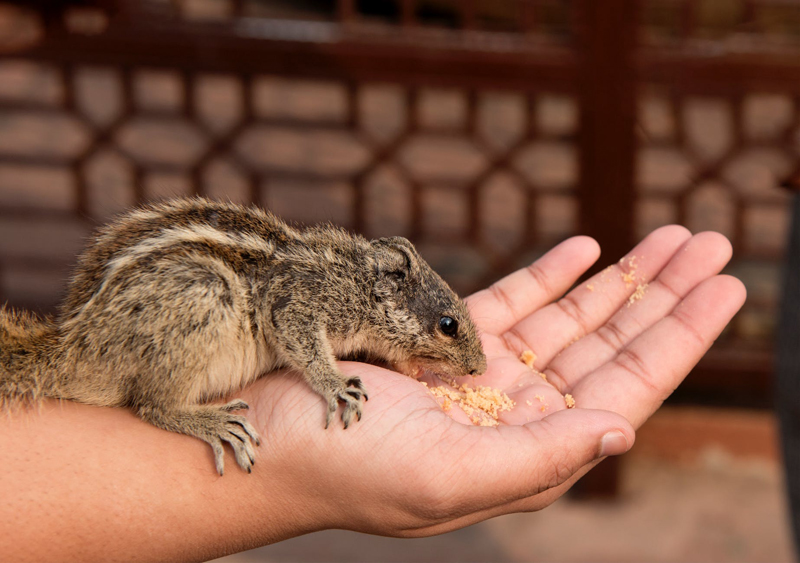Exotic Pet Invertebrates, Amphibians, and Reptiles

These exotic pets all have one similarity; they are unable to regulate heat within their own bodies. They are cold blooded, and since they can’t regulate heat they fall in the category of ectotherm. Other exotic pets like birds, skunks, primates, rodents, and many others, (all mammals or birds) are all capable of producing body heat. These warm-blooded species are endotherms.
Having an ectotherm as an exotic pet is a big responsibility. You must provide that exotic pet with the heat that it needs. Each ectotherm can have very different heat requirements and also, the method of achieving the heat that they need.
Ectotherms maintain their body temperature by absorbing heat from its environment, for example basking in the sun. Turtles like to climb out of the water and onto rock, where they can sit by the hour absorbing the sun’s heat.
During the cold winter months ectotherms do a variety of things, some species of mosquito that produces natural antifreeze called glycerol. Some animals burrow underground below the frost line. Others that can’t burrow will crawl into a safe crevice and their organs will literally freeze. You would think being frozen would deteriorate the cells and kill the animal. Again the capabilities of nature prove amazing; glucose permeates the vital organs consequently dropping the freezing level of the water protecting the animal.
One of nature’s ways of preserving ectotherms over the winter is snakes in winter dens. It is amazing what animals will do to survive. You can find hundreds of snakes in a winter den. You will even find copperheads, rattlesnakes, and other venomous snakes cohabiting in a single den.
Ectotherms don’t just loathe the cold; the cold can cause their ruin. If the ectotherm exotic pet isn’t warm enough they may not eat, even if they did eat they can’t digest the food.
Really, there are no ectotherms that are domestic pets. There are a captive animal. Many pets that truly are domesticated have been domesticated for one hundred to thousands of years. Examples of a true domestic exotic pet are parrots, domestic skunks, and ferrets. Aristophanes mentioned ferrets around 450-425 BC, about 2500 years ago.
Ectotherms can be very timid, when placed in a vivarium they can become very stressed if they have no place to hide. After some time they will become use to their situation and adjust to their new habitat.
All exotic pet ectotherms, like turtles, snakes, reptiles, frogs and insects should be acquired from a breeder that breeds and sells only captive bread ectotherms. Many ectotherms are considered threatened; vulnerable to extinction. Their nature habitats are also threatened if not already completely destroyed. People have trapped animals to extinction. Even the ectotherms that aren’t threatened should not be taken out of the wild, if it continues they will become threatened or extinct as well.
One more thing ectotherms have in common and it doesn’t matter if their skeletal structure is on the inside or the outside, is the need for vitamin D3. It is not feasible to get enough vitamin D3 from food intake so it has to come from the sun, or if they are a captured exotic pet living in a vivarium, the vitamin D3 must come from a full spectrum light source.
A great deal of information needs to be sifted through before considering an ectotherm as a pet. The expenses of setting up a habitat are quite pricey as is maintaining the exotic pet ectotherm. They may never be “released” back to the wild. Sometimes you must have a serious talk with yourself to determine if you are doing the right thing.
Reptile, Amphibian, and Insect Shop
Scroll down a litter further and sign up for the exotic pet’s newsletter. Your email is 100% safe, I never even see it. You will receive a newsletter twice a week. Once in a great while an emergency newsletter may go out, but this would be only for a big illness outbreak or other emergency. Subscribe so you will know when new content comes out!
My book (paperback) FERRETS: A Complete Guide

Kindle Version of Ferrets: A Complete Guide,/b>
Ferrets: A Complete Guide
PDF Version Ferrets: A Complete Guide (Access to free PDF Reader)
Ferrets: A Complete Guide
This site needs an editor - click to learn more!
You Should Also Read:
Exotic Pet Site Map
Ferrets - A Complete Guide Paperback and Kindle
Exotic Pet Shopping
Related Articles
Editor's Picks Articles
Top Ten Articles
Previous Features
Site Map
Content copyright © 2023 by Diana Geiger. All rights reserved.
This content was written by Diana Geiger. If you wish to use this content in any manner, you need written permission. Contact
BellaOnline Administration
for details.






